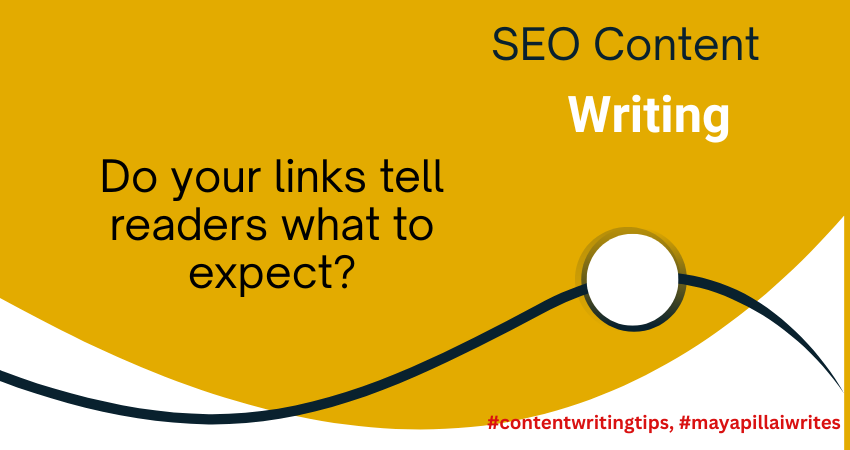How to Optimize Anchor Text for SEO

If you write online, you’ve probably added links to your articles. But the words you choose for those links — known as anchor text — matter more than most you realize. Anchor text is the clickable part of a hyperlink, and it tells both readers and search engines what to expect on the other side. When done right, anchor text improves SEO, makes your writing more reader-friendly, and helps your content rank. When done poorly, it can confuse readers and even lower your site’s visibility. In this article, you’ll learn how to optimize anchor text for SEO in a way that feels natural and easy to apply to your writing. This article is written from the writer’s perspective than from that of a SEO person. TLDR Anchor text is the clickable text in a link, and optimizing it improves SEO, readability, and user experience. Use descriptive and natural phrases, vary your wording, and link contextually within your content. Internal linking optimization keeps your site connected, while backlink anchor text builds authority. Regular anchor text audits ensure balance, and scaling practices help writers maintain consistency. Importance of an Anchor Text Anchor text SEO isn’t about tricking Google. It’s about being clear and helpful. If you use vague anchors like “click here” or “read more,” readers don’t know what they’re clicking on. If you stuff keywords into every link, it looks spammy and unnatural. If you use descriptive, natural anchor text, readers get value and search engines understand your content better. For writers, anchor text SEO is a skill that makes your work look more professional and improves discoverability. Internal Linking Optimization Internal linking optimization is linking between your own blog posts, portfolio pieces, or website pages. It keeps readers exploring your work and helps search engines connect your content. Match the anchor to the page topic If you wrote a guide on building a freelance portfolio, don’t just link with “portfolio.” Instead, use how to create a freelance writing portfolio. It signals exactly what the reader will get. Be descriptive, not vague Instead of “read more,” write anchors like learn how to optimize anchor text. Descriptive anchors improve trust and clicks. Use natural variations If you always link with the same phrase, it feels robotic. For example, mix backlink anchor text, anchor text for backlinks, and how backlinks work. Variations make your writing more natural. Spread anchors across your site Don’t always use the same anchor for one post. Use different but related phrases so your content captures multiple search terms. Link from stronger posts If one of your articles ranks well, link from it to a new post using optimized anchor text. This passes authority and helps the new post grow. Keep links in-context A link inside a paragraph is more powerful than one in a sidebar or footer. Always link within sentences that flow naturally. Backlink Anchor Text Backlink anchor text is what other sites use when they link to you. As a writer, you can’t fully control this, but you can guide it. Don’t over-optimize If too many sites link to you with the exact phrase anchor text SEO, it looks unnatural. Balance it with branded and partial matches. Suggest variations when guest posting If you’re writing a guest blog, suggest multiple anchor options. For example: internal linking optimization tips, backlink anchor text explained, or anchor text SEO guide. Blend brand and keyword anchors For your own site, try combining your name or brand with keywords, like Maya Pillai’s guide to anchor text SEO. It makes the link authentic. Avoid spammy anchors Low-quality sites may link with irrelevant words. These can hurt your profile. If possible, ask for changes or ignore them. Closing Paragraph Optimizing anchor text isn’t about following rigid SEO tricks; it’s about writing with clarity and intention. As a writer, you’re already choosing words carefully for your audience. Anchor text SEO is simply another layer of that craft. When you use descriptive, natural anchors and apply internal linking optimization consistently, your writing not only flows better but also gains visibility. Over time, this small habit can turn into a powerful strategy that strengthens your content and helps you stand out online. FAQs What is anchor text SEO? Anchor text SEO is the practice of using clear, descriptive words for hyperlinks so that both readers and search engines understand the linked page. How to optimize anchor text without keyword stuffing? Focus on natural language. Use variations like partial matches, branded anchors, and related terms instead of repeating the same keyword every time. Why is internal linking optimization important for writers? Internal linking optimization connects your articles, helps readers explore your content, and passes authority to key pages, which boosts rankings. What is backlink anchor text and why does it matter? Backlink anchor text is the clickable text used by other websites when linking to your content. Natural and varied backlink anchors strengthen your SEO profile. How often should I do an anchor text audit? Running an anchor text audit every few months helps you spot overuse, irrelevant anchors, or spammy links. This keeps your profile balanced and trustworthy.
